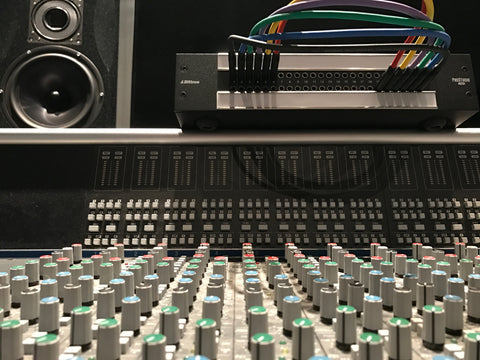What is a patchbay?

A question many of the newer generation of audio engineers may be asking is: “What is a patchbay?” Since a lot of work these days gets done completely inside the computer environment, a patchbay is not always necessary and is sometimes not included in the modern workstation. In this installment, we will answer the question: “What is a patchbay?”
A patchbay is a group of up to 96 individual audio (or video) connections that allow you to configure the signal path in your studio in any order you wish. Using a standardized connector, (either ¼” TRS or TT formats) one may take a microphone signal that originates in a remote part of your recording space and route it to any mic preamp, then to a compressor, then an EQ, then to a recording medium or any other possible destination for processing. Patchbays bring all of our possible signal paths to one convenient location so we can decide, (depending on our own individual needs at a particular time) how to route our signals.
What is a patchbay? There are many types of patchbays and they are all not created equally. Regarding audio patchbays, there are RCA, TRS and TT. RCA patchbays are only useful if you are dealing solely with unbalanced audio signals such as those on consumer tape decks, CD players and other consumer equipment. Occasionally a professional deck will have both balanced and unbalanced connections, in which case you would usually want to use the balanced connections, but we will touch on this later. Balanced signals are not compatible with unbalanced patchbays such as RCA patchbays so if all of your signals are unbalanced, you can use an RCA configuration. If any of your signals are balanced, you need a balanced patchbay such as a TRS ¼” or a TT bay. Most RCA patchbays have RCA connectors on the rear to get your signals in and out, and RCA on the front to do your signal routing.
¼” TRS bays are very common and have quite a bit of usefulness in today’s studios. They utilize the standard ¼” size connector that most all pro musical equipment also utilizes. Generally they come in a 2x24 configuration, which consists of two rows of 24 jacks each. The TRS stands for Tip, Ring, Sleeve and corresponds to the signal hot, signal cold and the ground signal paths inside the cable. Don’t mistake the guitar cord (TS ¼”) for a TRS cable- they are very different. TS cables are for sending strictly unbalanced signals and TRS cables can carry both. If you are using a TRS patchbay, make sure your patch cables are all TRS cables to insure you are transporting only balanced signals and to make sure you are not introducing unnecessary noise. Typically your signals will physically plug into the back of the bay with a standard ¼” cable and then your signal routing will be done on the front with the same type of cable.
The pro level and certainly most configurable type of patchbay is the TT bay. This is the type of patchbay that most professional recording studios, television stations, and post production facilities employ. They are configured in 2x24, 2x48 and occasionally other configurations but 2x48 is the most common. Most manufacturers of TT bays allow for some type of internal signal routing that is meant to save you time in the studio and allow for maximum flexibility when using your studio. These can include automatic normalling connections that take a favorite output and route it to a favorite input. Internal connections can be made to group the grounds of several signals together or to isolate them from each other. Signal paths can be made to connect always or half of the time depending on whether there is a patch cord inserted. The TT bay can have any number of single channel or multi channel connectors on the back to get your signals in and out, but will always have the TT or Tiny Telephone connector on the front to do your signal routing.
So what is patchbay? A patchbay is a very handy piece of equipment that can be configured in many different ways to allow the signals you rely on in your studio to be where you need them when you need them. If you have outboard equipment or a recording console in your studio, it’s highly likely that you need one.